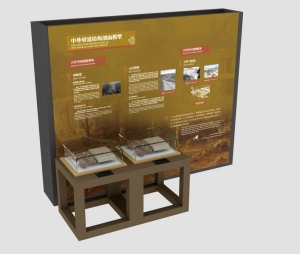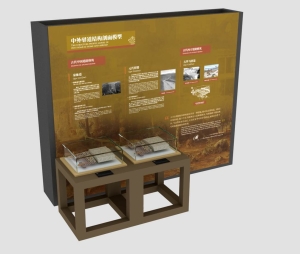在这里,您首先可以看到一幅地图。这幅地图上,红色的箭头就是马可波罗行进的路线。马可波罗先是从意大利的威尼斯出发,来到地中海东岸,然后抵达了今天伊朗的大不里士附近。在这里,您可以看到一个迪尔加钦商栈模型。商栈,在丝绸之路上非常重要,它们商人和旅客休息和补给的地方,也是丝路上的重要交通枢纽。
The first thing you see here is a map, on which Marco Polo’s routes are marked with red arrows. Marco Polo started off from Venice, Italy, passed through Mediterranean Sea’s east coast, and then arrived near modern-day Tabriz, Iran. Over here is a model of the Dilgachin Trading Post, which played a critical role on the Silk Road, as it accommodated and resupplied merchants and travelers, serving as a key transportation junction on the Silk Road.
离开伊朗之后,马可波罗几经辗转,从新疆的喀什地区进入了今天的新疆。在中国,也有非常重要的商栈,我们一般叫驿站,比如甘肃的悬泉置和河北怀来地区的鸡鸣驿。悬泉置最早是汉武帝时期就开始使用了,2014年的时候,悬泉置遗址,以丝绸之路长安到天山一带的重要组成部分被列入了世界文化遗产。而鸡鸣驿则是中国现存最大的驿站。
After leaving Iran, Marco Polo trekked across the Kashgar region of Xinjiang and entered modern-day Xinjiang. China also set up trading posts, which we refer to as Posts, such as Xuanquanzhi Post in Gansu and Jiming Post in Huailai, Hebei. Xuanquanzhi Post was first established during the reign of Emperor Wu of the Han Dynasty. In 2014, Xuanquanzhi Post Site, as an important component of the Silk Road from Chang’an to Tianshan, was included as a world cultural heritage site. Jiming Post is the largest existing post in China.
来到中国之后,马可波罗在中国游历了十几年,也见识到了元朝时期中国的道路网络。
After setting foot in China, Marco Polo traveled around China for over a decade, which helped him understand China’s road network during the Yuan Dynasty.
在这里的地图上,您可以看到元朝的疆域非常辽阔,因此它需要非常发达的交通网络和邮驿制度来维持对全国的统治。
On the map here, you might notice that the Yuan Empire possessed territory that stretched far and wide, which drove its need for a developed transportation network and post management system to maintain its rule over the country.
元朝修建的驿道,以大都为中心,往东可以抵达今天的朝鲜,黑龙江,往西可以抵达中亚、西亚,甚至欧洲东部地区,往南可以抵达越南、缅甸等地,范围之广前所未有。在这些驿道上,还设立了超过l500多处驿站,为人们提供交通工具、住所、饮食等,这样一来,驿道就形成了一个庞大的物流网络,在全国各地不断地输送人员、物资、信息等等,据马可波罗描述,当时总共有将近四百万匹快马在这个物流网络上奔驰。在展柜左下方,您可以通过多媒体游戏体验一下元代邮驿的路线、交通、和传递方式等等。
The post roads built during the Yuan Dynasty centered on Dadu and reached today’s North Korea and Heilongjiang in the east, Central Asia, West Asia, even Eastern Europe in the west, and Vietnam and Myanmar in the south, exhibiting an unprecedented scale. In addition, more than 1,500 posts were set up along these post roads to provide transportation, accommodation, food, drink, and more, forming an enormous logistical network that never ceased to transport people, goods, and information all across the country. According to Marco Polo, nearly four million horses galloped at breakneck speeds across this massive logistical network at that time. In the lower left of the displayed, these multimedia games provide an experience of the routes, transportation, and delivery modes that the posts possessed in the Yuan Dynasty.
接下来,我们到左前方,去看看这些驿站里都有些什么好吃的。
Next, let’s go to the front left and see the delicacies these posts offered.




















 京公网安备11010502039775号
京公网安备11010502039775号





